Pontiac was always a bit like the middle or second-to-youngest sibling in the family who had to work extra hard to get attention, and struggle with whatever the bigger brothers or sisters had to hand down. Big-volume player Chevy had the new toys, and Pontiac needed to make do in any way they could. Often, they improved upon them, but even when they did, their efforts were in vain and quickly forgotten.
A little while back, we explored how Pontiac’s small car efforts were always whatever the other GM family members could spare. The Daewoo-made Opel Kadett-based LeMans was an unfortunate example of this, but they actually had one inherited from Chevy that was arguably just as bad, if not worse.
To add insult to injury, Chevrolet got a fancy twin-cam gold-trimmed version of this unfortunate small car called the Cosworth Vega. Pontiac? They received an embarrassment of pasted-on plastic and vinyl cosplaying as “sporty” called the Pontiac Astre “Li’l Wid Track.” There’s a whole lot of pain to unpack here.
You Mean We Couldn’t Trust John DeLorean?
We begin with a direct quote from Chevrolet’s general manager, one John Z. DeLorean, at the time of the 1971 Vega’s launch.
“There’s nothing that comes within a mile of the Vega for performance and handling. This car will outhandle almost any sports car built in Europe. By virtue of a number of different things, the Vega is going to be built at a quality level never before attained in manufacturing in this country, and probably in the world.”

Almost ten years later, that same person had this to say about the car:
“The Vega was a disaster from the word go … My repugnance and distaste for selling and marketing a product I did not believe in had reached its peak at Chevrolet with the Vega … After eight miles (at Milford Proving Ground), the front of the (prototype) Vega broke off. The front end of the car seperated from the rest of the vehicle. It must have set a record for the shortest time for a new car to fall apart.”
You might have reason to not trust someone known later for very questionable business deals, but you can’t deny that DeLorean delivered the goods during his time at Pontiac. He knew how to make successful products like the GTO, OHC six, and Grand Prix, and he was also well aware that being forced by his superiors to create a revolutionary subcompact Chevrolet from scratch in just two years was a recipe for catastrophe. Indeed, it was. I’ll give you the highlights, or lowlights as it were.
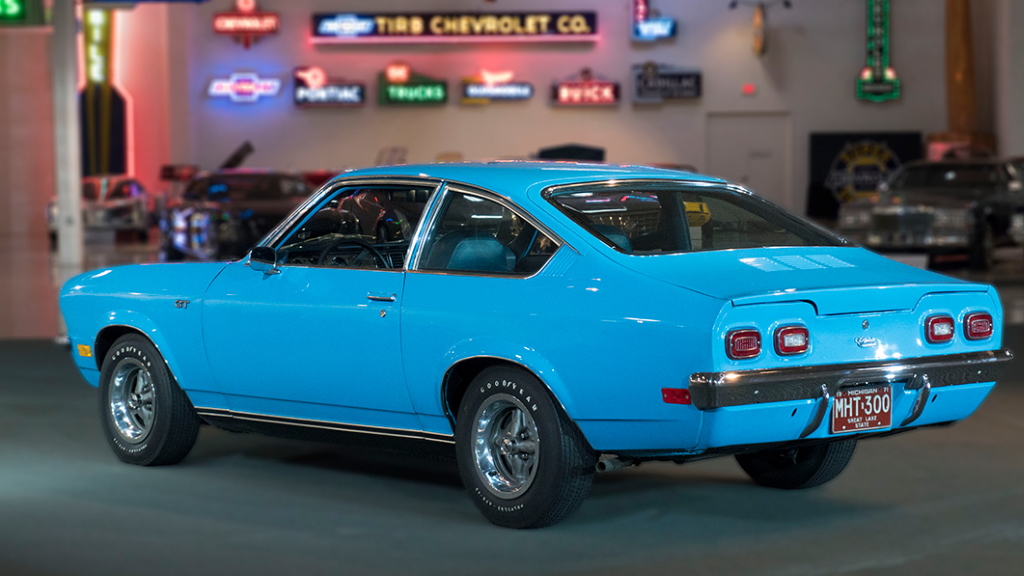
First, Delorean’s boss (Ed Cole) pushed for the Vega to employ an aluminum-block OHC four engine without cylinder liners, and honestly thought the block’s heat dissipation would allow it to run without a radiator. Seriously. After much objection, he was overruled, but the radiator that it did get was too small. If you didn’t make sure the coolant level was topped off, the engine overheated and either scored the linerless cylinder bores or blew a head gasket. And if you did escape scored bores and the head gasket held together, vibration could rattle the carburetor right off the top of the motor.
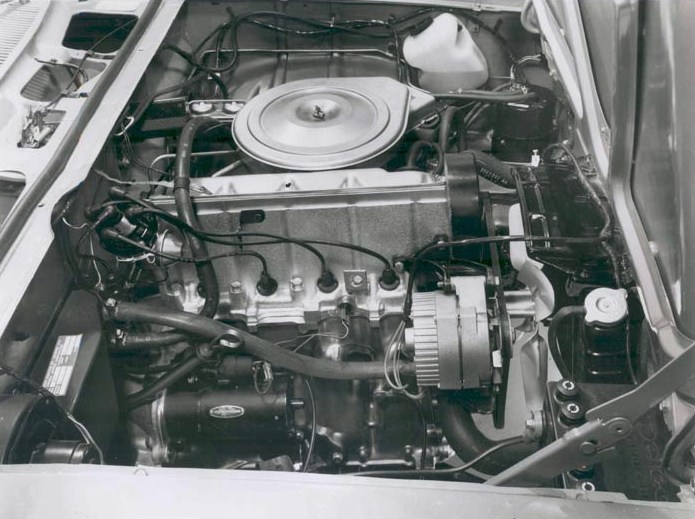
It gets worse. You’d think dunking a unibody into a tank of rustproofing would be a perfect way to ward off corrosion, as every nook and cranny would get covered in the magic red stuff when the body was fully submerged – except nobody noticed the body trapped air in places as it sank, leaving expanses of untreated bare metal exposed to water and salt slush kicked up into the wheel wells, which were left unlined in order to save a few bucks.
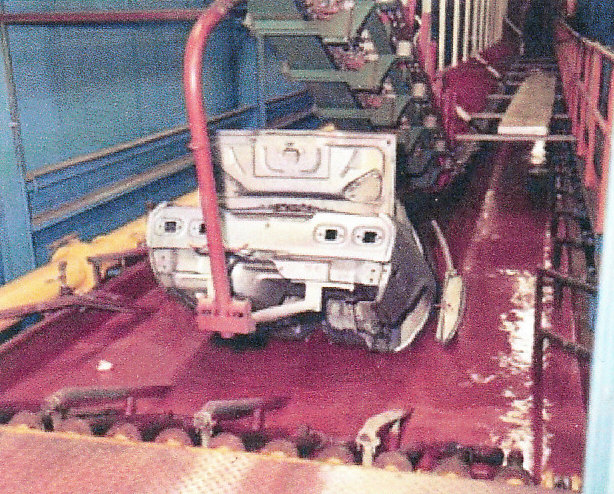
Add in a strike-plagued workforce (plenty of other under-engineered bits and lapses in quality I could go on about) and you can understand why the Vega could rightfully be called one of the worst cars in the history of the western world.
And yet, the Vega actually sold quite well. Why did people buy this thing? Well, if you drove one that had been meticulously assembled (like the press cars probably were), you’d have been impressed by the handling and even the performance of the higher-powered 90-horsepower, double-barrel-carb version of that ill-fated motor. And just look at the thing; sure, if you’re Of A Certain Age just the sight of a Vega triggers the scent of antifreeze and rust, but if you can distance yourself from those preconceptions and judge it on a purely aesthetic basis, it’s a very attractive car. That early coupe looks like a miniature Camaro, or Camaro shooting brake in the case of the “Kammback” wagon. GM supposedly used a Fiat 124 coupe for inspiration; they nailed the look but unfortunately captured the dubious durability of that Italian car as well.
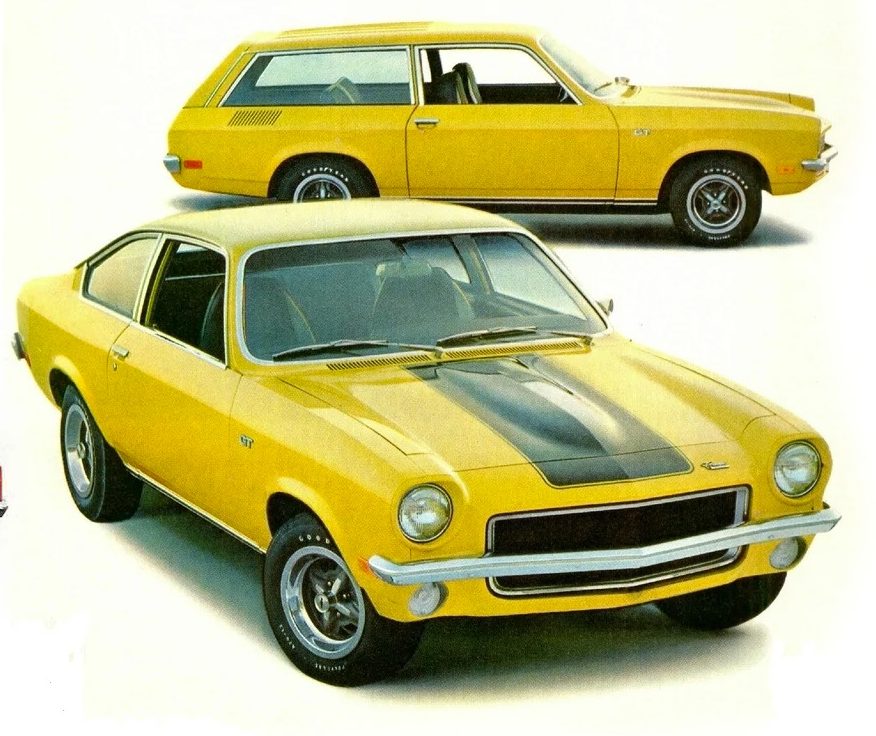

Initially, Chevy kept the Vega to itself in the United States – but that doesn’t mean Pontiac didn’t sell their own version of the Vega elsewhere.
We Want Junk, Too
Based on all the talk of tariffs and the North American Free Trade Agreement, you’re probably aware that you can’t simply drive truckloads full of American cars over the border and sell them. That’s why, over the years, there were some strangely-branded versions of cars common to the US market for sales in the Great White North from Mercury pickup trucks to Acadians and Beaumonts. One of those cars was the Canadian-built 1973 Pontiac Astra, a subcompact that looked a whole lot like a Vega with a split front grille because that’s what it was: there were really no other significant changes.
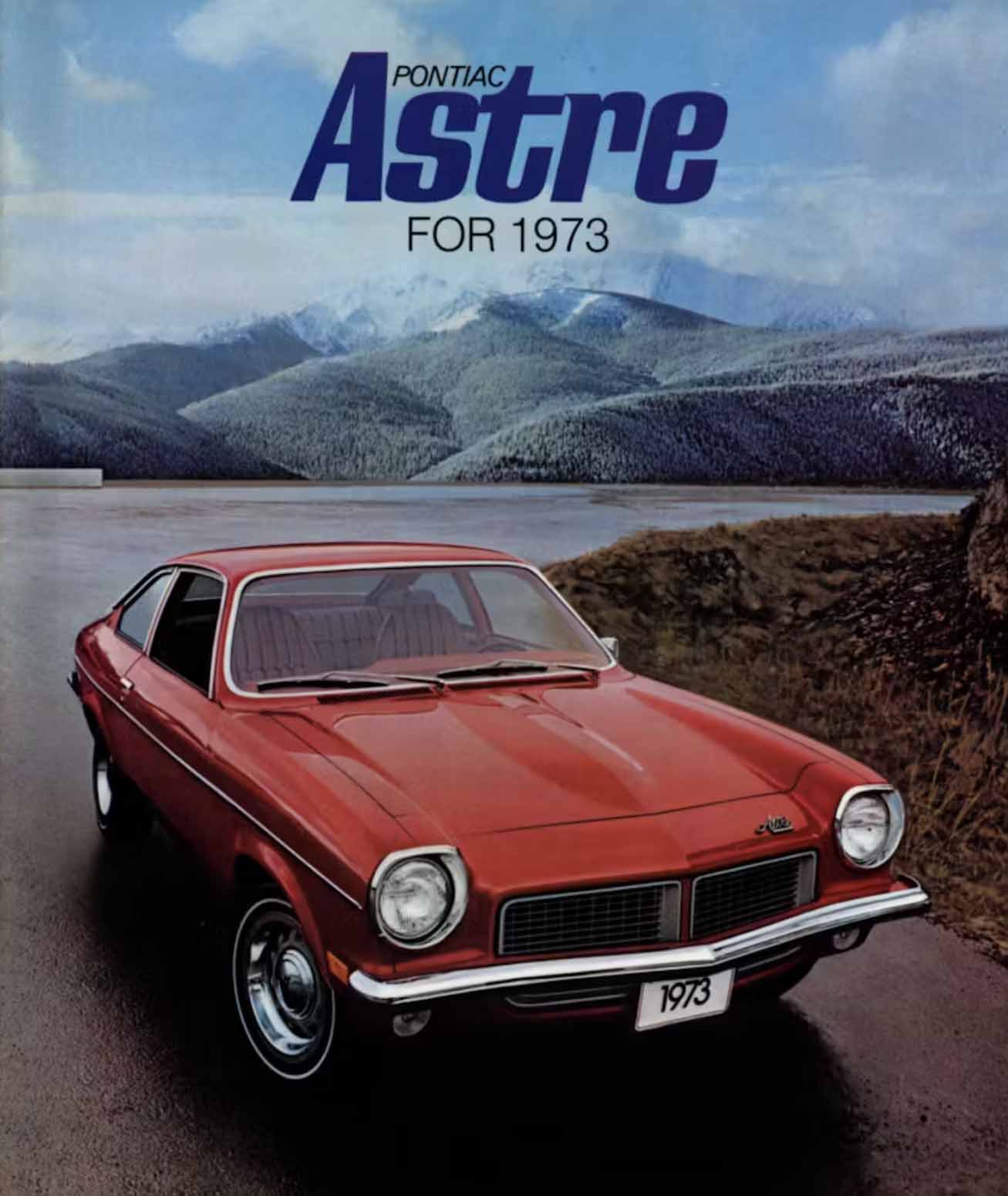
The Astra remained a Canada-only offering in 1974 when the big five-mile-per-hour bumpers became the law in the US. Pontiac’s version gained a new, unique nose and also cool slot taillights similar to those on a ’68 Firebird. I still like the earlier models best, but the restyle and incorporation of the ram bars was better than it could have been (and it still resembled the concurrent Camaro).
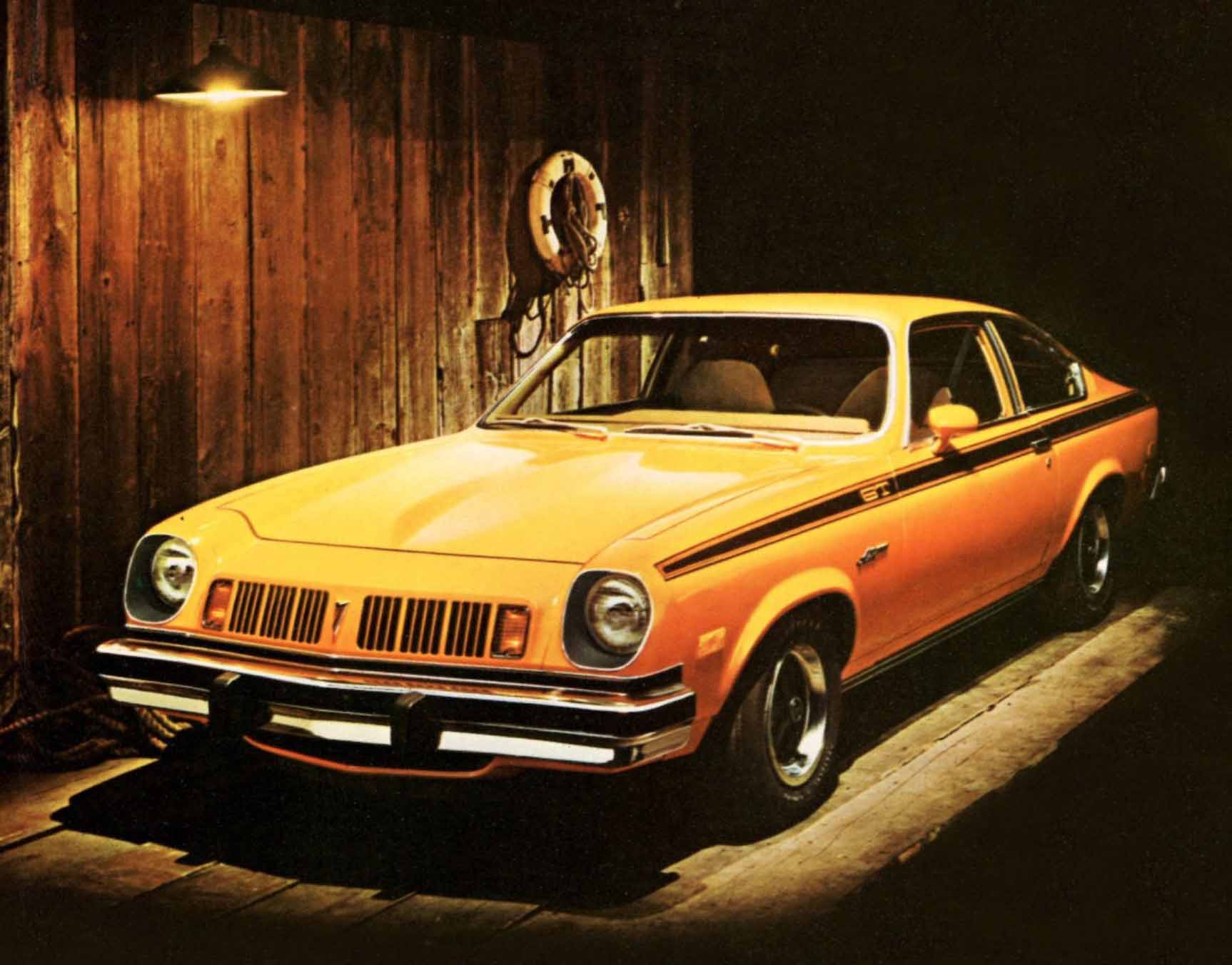
You could get essentially any of the Vega’s body styles as an Astre, including the odd “panel van” with a big storage locker where the rear seat used to be, and the passenger seat offered as an option.
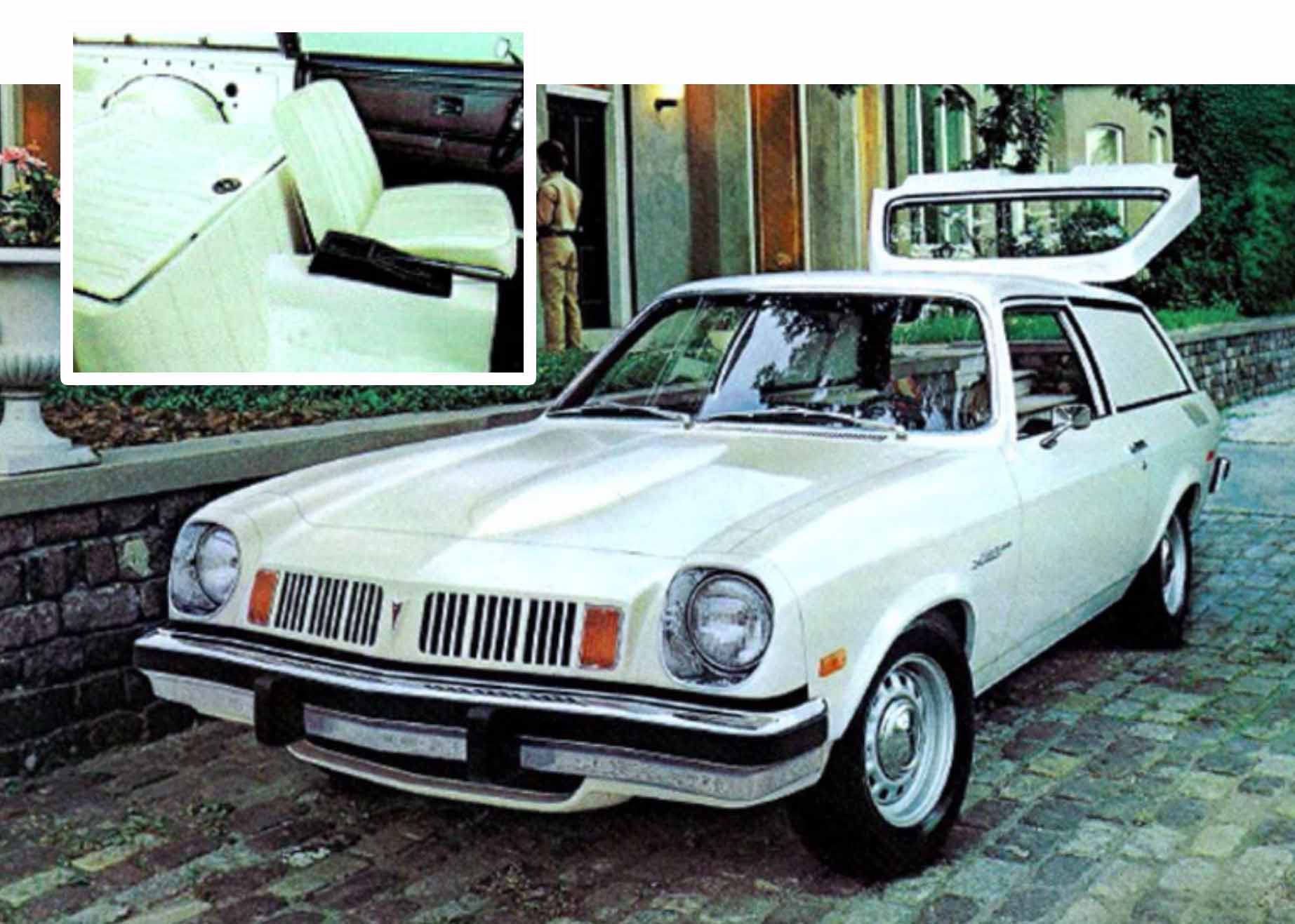
The Astre wouldn’t stay Canada-only. By 1975, every car dealership in America wanted a subcompact in a post-gas-crisis economy, and Pontiac was tired of our syrup-swilling friends getting something they didn’t have. General Motors finally capitulated and launched the US version of the Pontiac-rebadged Vega, now with something like “300 improvements” (like adding a coolant recovery tank and fender liners) to fix things that should have never been wrong in the first place. Remember, in the seventies, the latter part of the road testing and durability process at GM was done by you, the customer. Regardless, the later Vegas were vastly improved over the first versions.
The US market still got the split-grille nose that looked good and Firebird-like, as if it would be driven by a Jim Rockford if he ran into harder times than he was already used to.
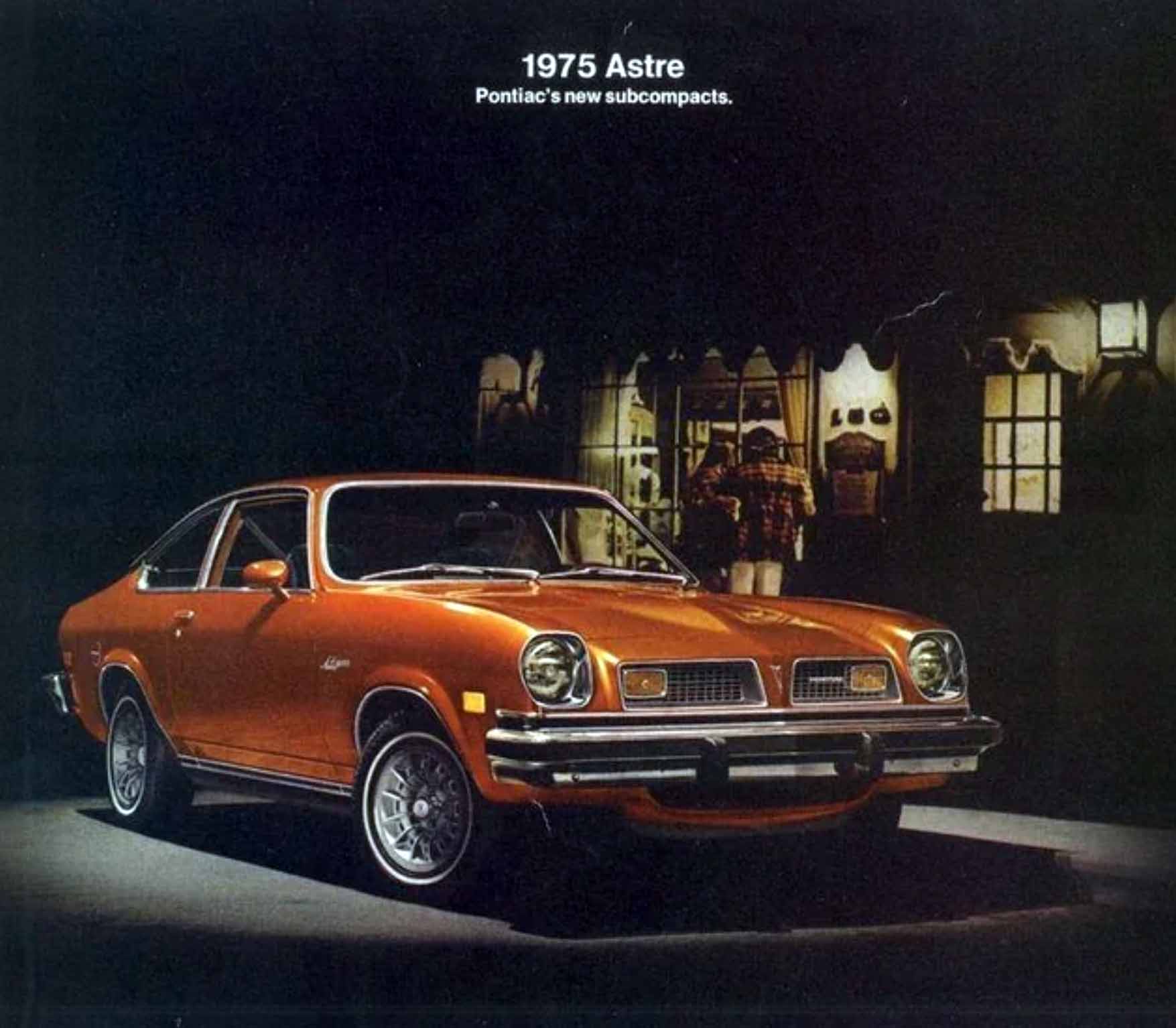

Coming to the party four years late, the Pontiac guys felt they needed something to let the world know that you didn’t have to go down the road to a Chevy dealer to purchase garbage; Pontiac had its own crap car now! To promote this econocar, Pontiac decided to talk to the man who worked magic for the brand a decade before: Jim Wangers.
High Performance, Uh, Decal Adhesive?
You might not know the name Jim Wangers, but you sure know what a Pontiac GTO is. That’s because Wangers was working at Pontiac’s ad agency in the sixties and made sure that the Tempest muscle car received more exposure than any Mopar ever did. In the seventies, Wangers ran a firm called Motortown, a Detroit-based company that modified cars from Big Three car makers into rather cheesy mock-muscle cars like the Mustang Cobra II (Farrah Fawcett’s car in Charlie’s Angels) or the even worse Dodge Aspen R/T. Dropping off an Astre on Wanger’s doorstep, Pontiac knew that if anyone could make this disguised Vega into something special, he was the man.
What Wangers came up with called upon Pontiac’s old ad campaign from the sixties. Back then, Pontiac was known for “wide track” cars because, for a time, Pontiac pushed the wheels out as far as possible and the cars really did have a wider track. By 1975, that advantage had largely evaporated, but Wangers knew how to sell sand in the desert; the “Li’l Wide Track” was born. That’s right, he didn’t even spell out the word “little.”
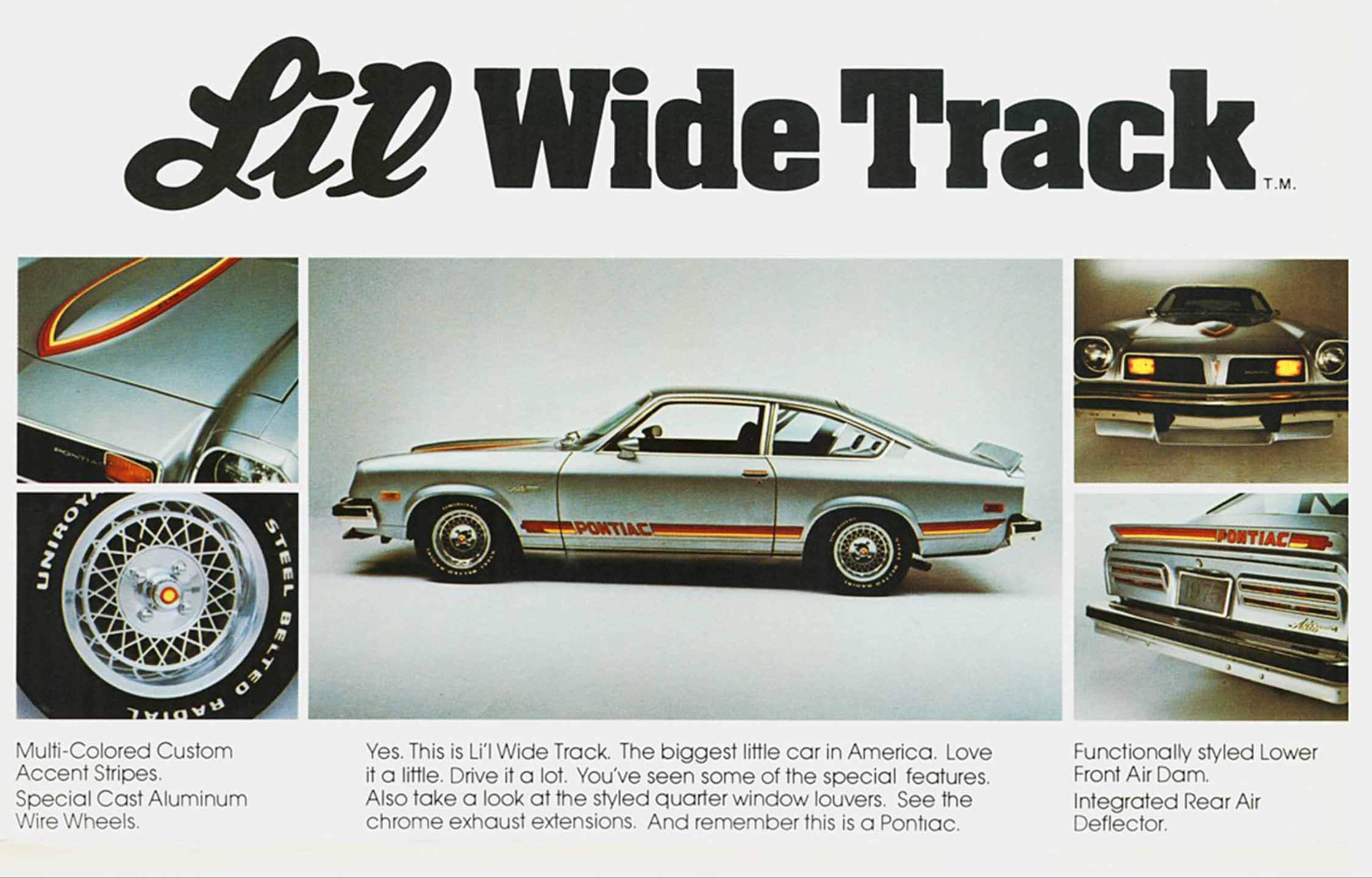
It might just be the photography above, but I’m willing to bet that the silver paint on the door not matching the other panels was done at the factory.
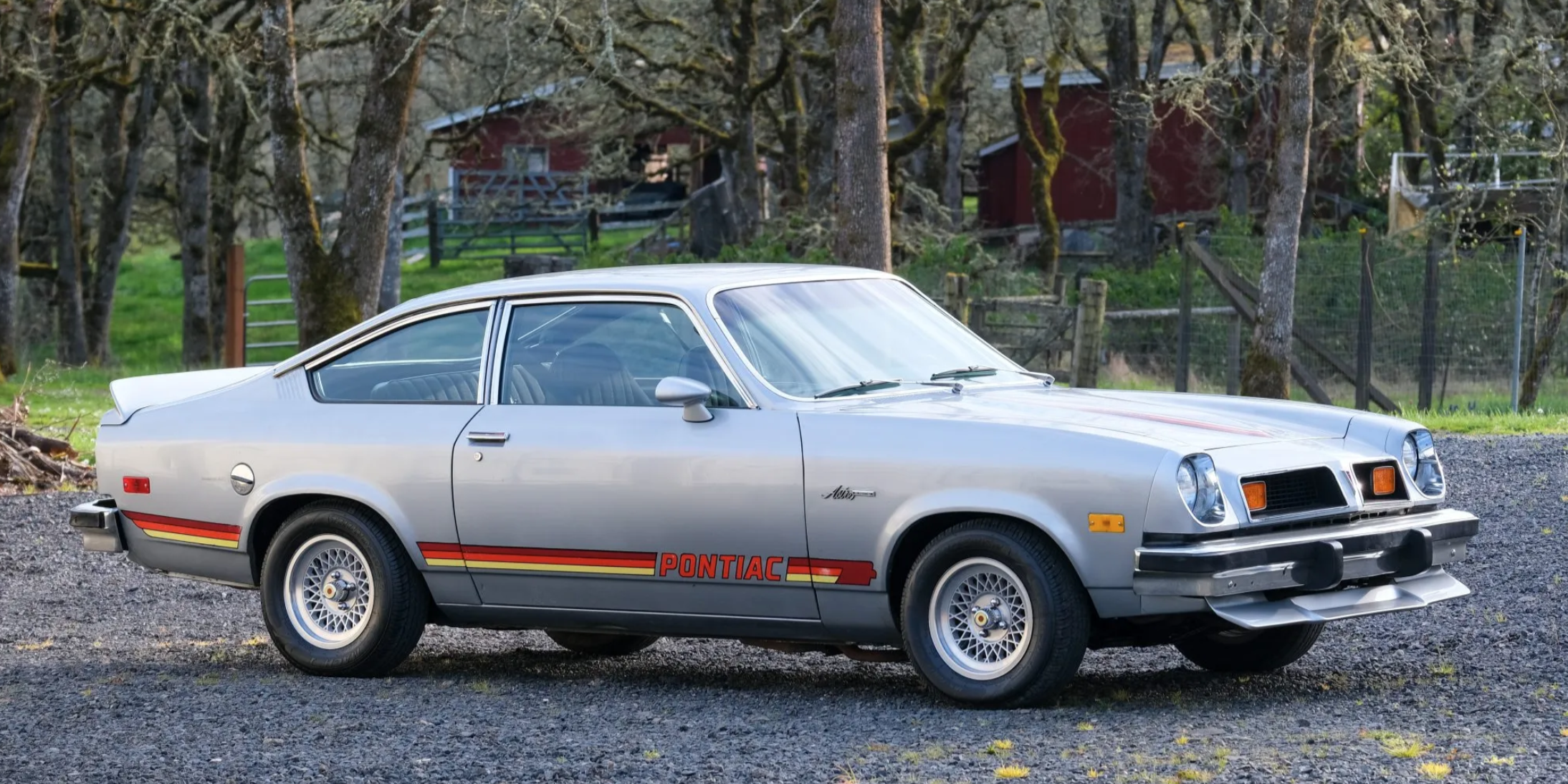
The Li’l Wide Track was everything you’d expect from a heart-of-the-malaise-era “performance” package: a front air dam, a spoiler in back, whopping 13-inch alloy wheels, rear window louvers, a chrome exhaust tip, tons of brightly colored decals, and no performance improvements whatsoever to the two-barrel 140 cu. in. 87 horsepower four, and no handling enhancements, either. Absolutely nothing.
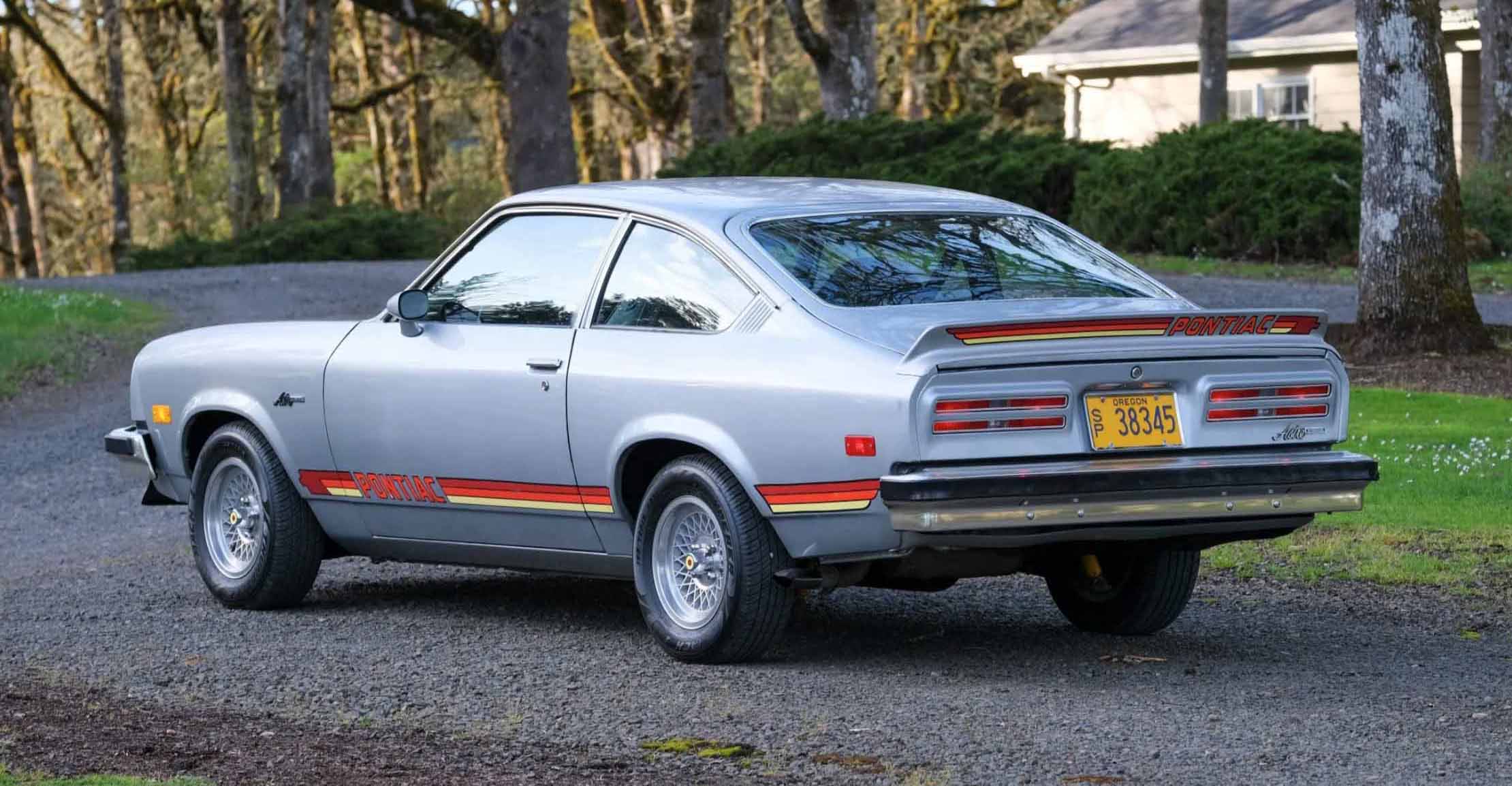
Note that the example above doesn’t have the side window louvers that Motortown added to every Li’l Wide Track, since one apparently fell off; not surprising, as I’m sure they were just adhesive-mounted onto the glass fifty years ago.
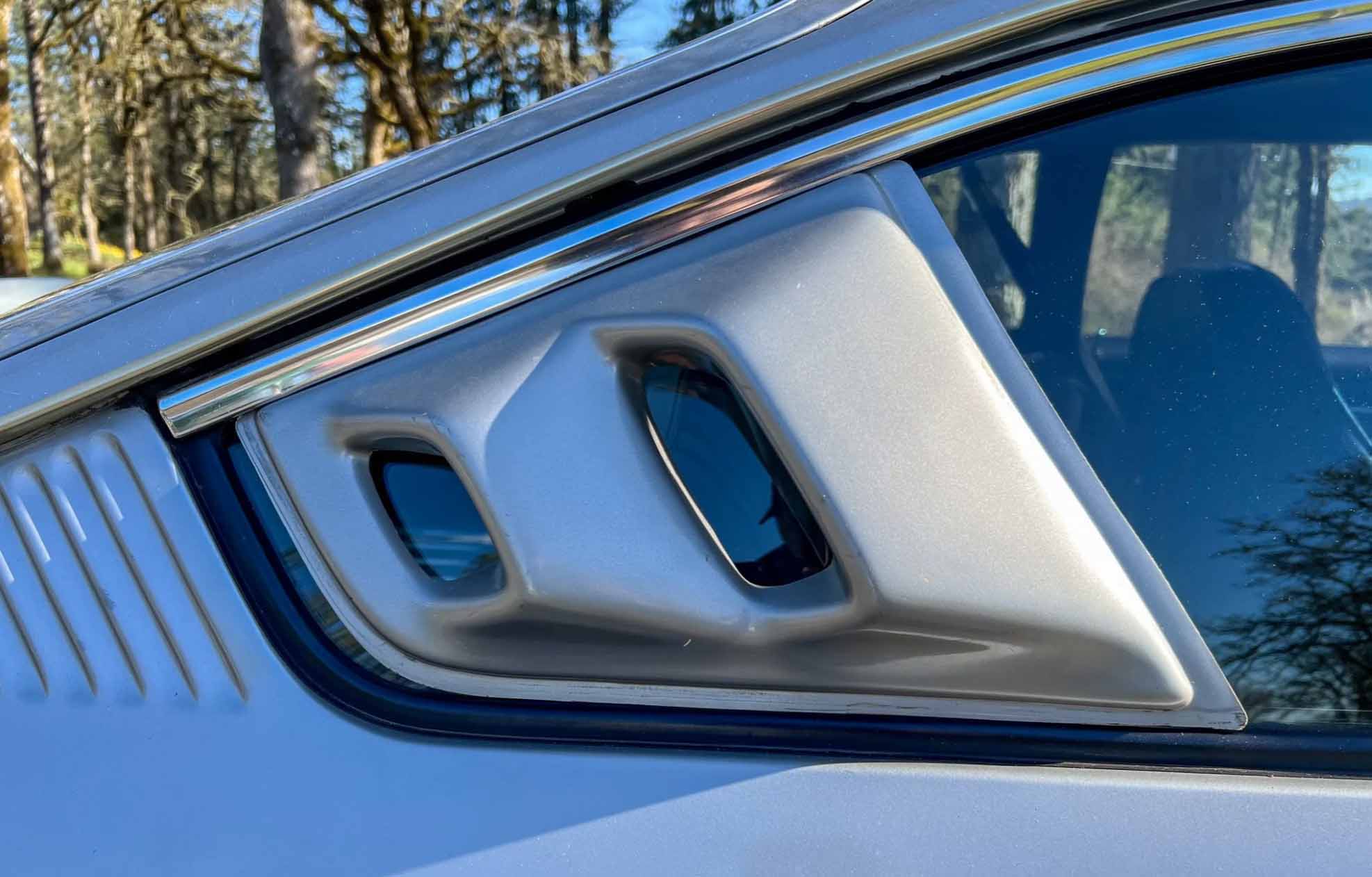
As with most subcompacts of the time, you pretty much sat on the floor of this thing. At least Pontiac offered rather comprehensive instrumentation as an option.
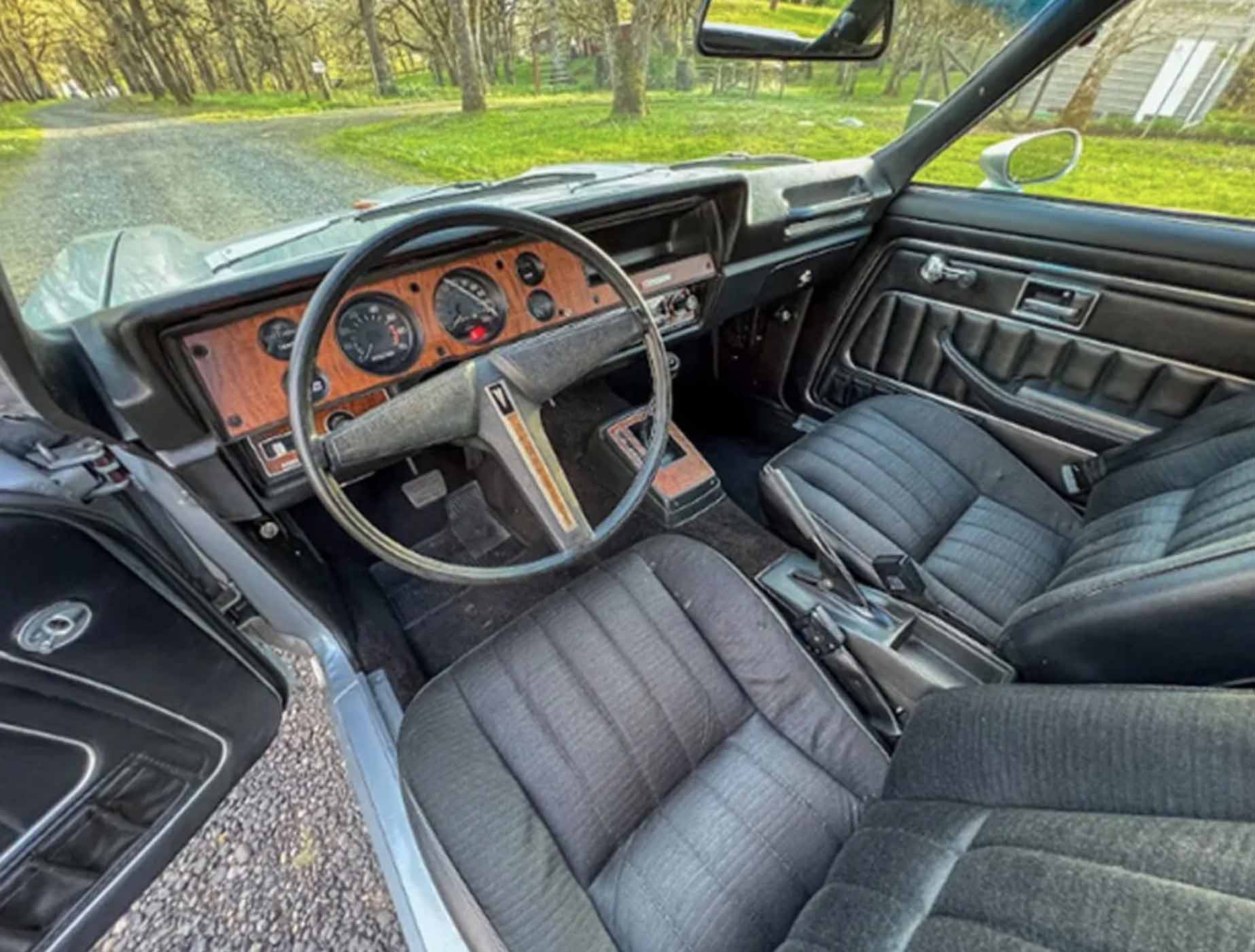
The rear seat is also the expected butt-pit variety, but it could fold down in the hatchback models like this to create a pretty spacious area:
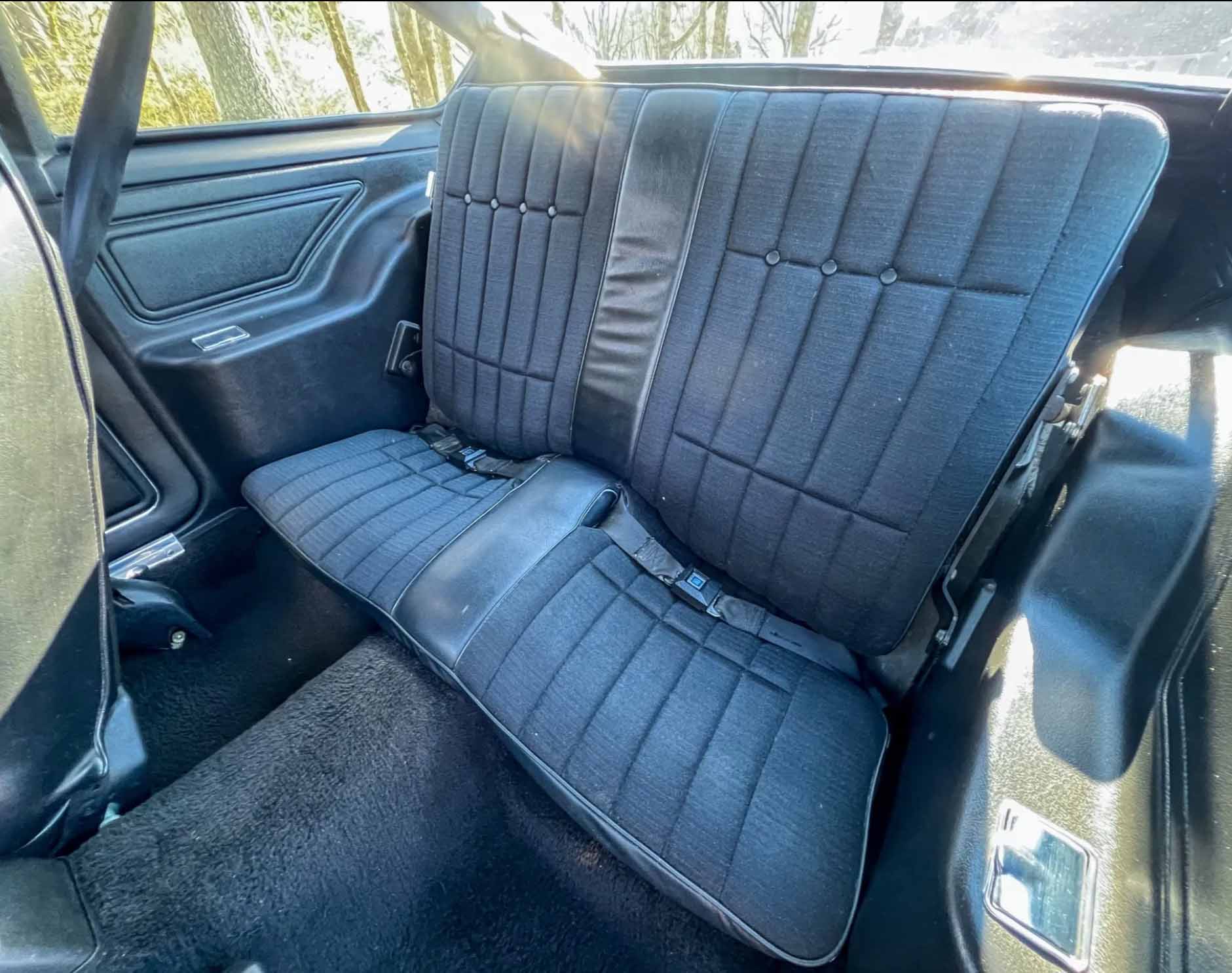
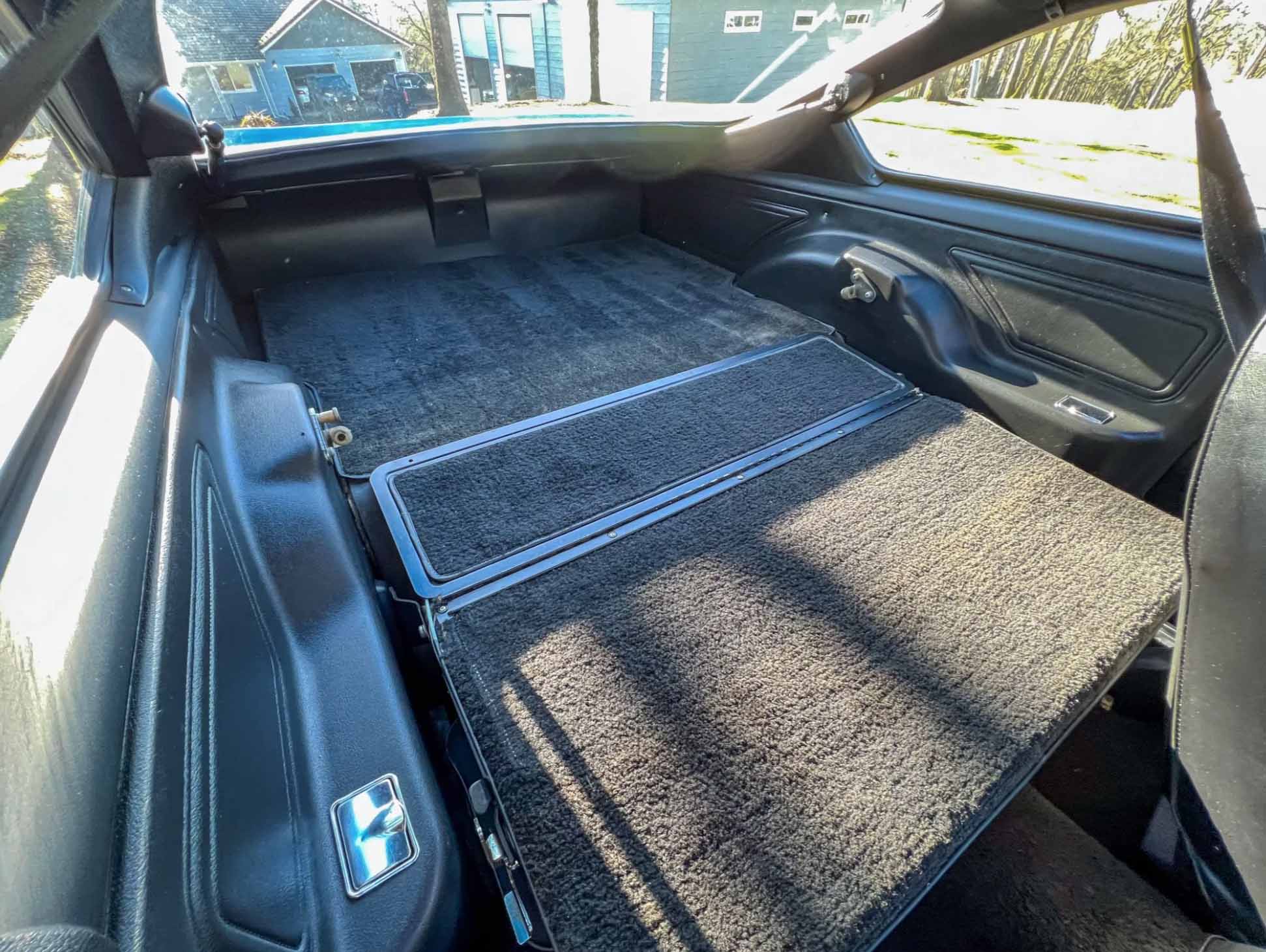
Here’s a video of that Bring A Trailer car from a little while back. It’s just so strange for me to see an actual running and driving Vega with the original motor, which by 1975 was called the “Durabilt 140” and featured a new cylinder-head design, improved cooling, and a five-year, 60,000-mile engine warranty to attempt to lure back leery customers.
It’s estimated 3,000 Li’l Wide Track Astres were produced; all of the production units were silver and were offered – I swear that I’m not making this up – with an automatic transmission only. Supposedly, the components from the package were later offered as a dealer-installed kit so you could have chosen different colors or even added the bits onto a stickshift car, or even a station wagon like the one shown in the ad below (Wangers claimed that he never produced a customer Kammback).
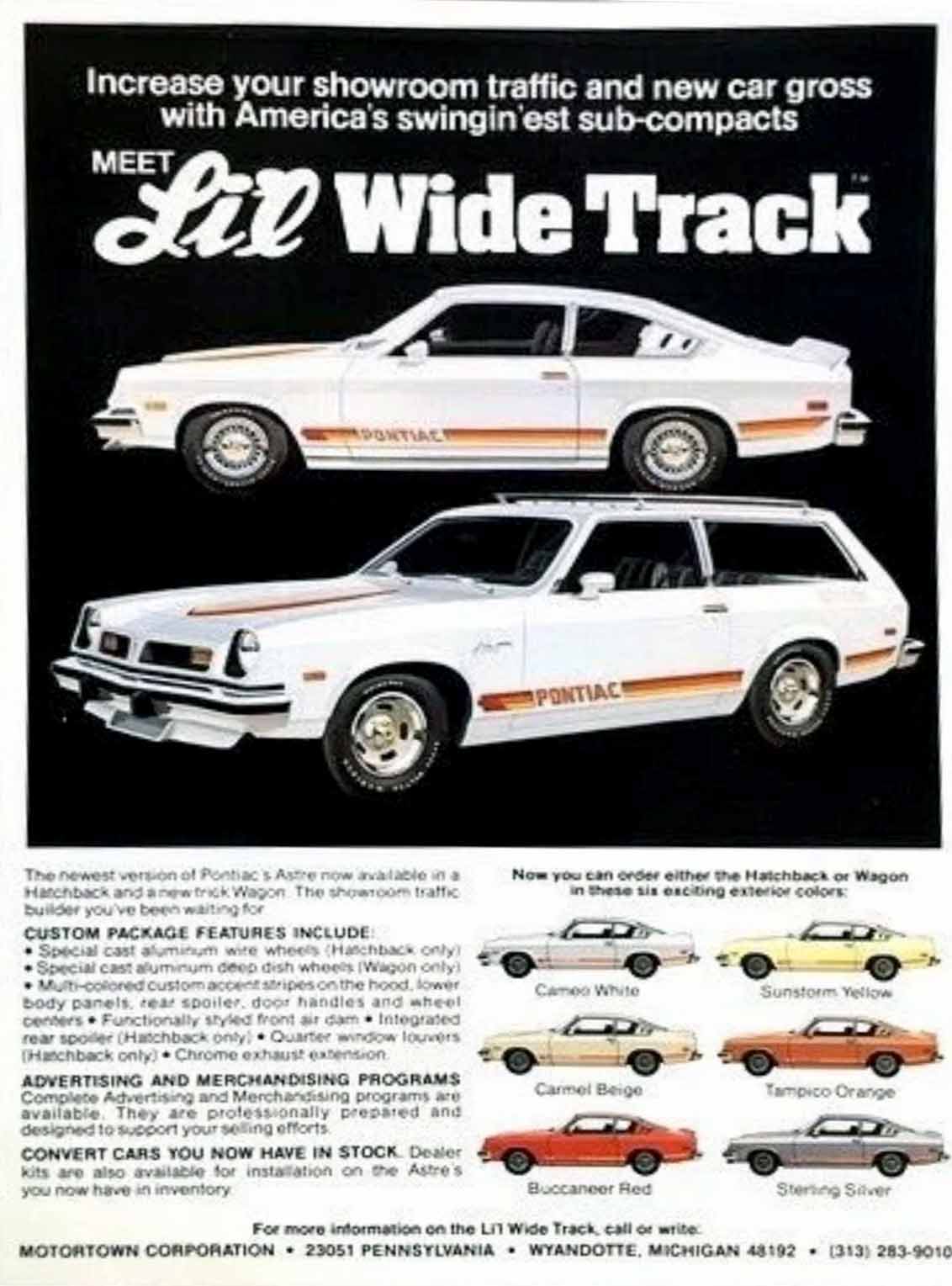
Ultimately, even if this special edition did bring attention to Pontiac’s Vega clone, the sales of the Astre never touched the Vega. The Li’l Wide Track only lasted for the debut and didn’t make it until 1977 for the Astre’s finally year when it ditched its notorious motor for the more reliable Iron Duke and was finally more or less as crappy but not crappier than the average American subcompact (the chassis and even the wagon body lived on as the Pontiac Sunbird through the 1980 model year).
How Can You Hate Something With Li’l In The Name?
Given a long enough timeline, anything will appreciate in value, but for the Astre that might take until the next century. Nice-condition non-Cosworth Vegas still tend to shift for under $10,000. The Li’l Wide Track in the pictures above is about the only one I could find that was on the market in recent memory; it’s been listed at one site for around $15,000, but it stalled at around five thousand less than that at Bring A Trailer. This Pontiac is about all the proof you need that rarity doesn’t equal value. But that doesn’t mean I don’t want it.

You see, in my search for the worst Pontiac ever, it was difficult trying to skirt under the very low bar set by that Korean-made-Opel LeMans; one would assume that you couldn’t get much lower than an Astre Li’l Wide Track. Still, as I look at this thing, I can’t help but smile. Marie Kondo says that if something gives you joy, you should keep it, even though I highly doubt she was referring to a cosmetically customized and rebadged Chevy Vega.
It’s a great-looking little coupe, and the silly graphic enhancements turn it into something that people will walk past half a dozen McLaren who-cares-what-model-it-is at Cars & Coffee to snap a shot of. I promise you, you won’t see another one.
Pontiac Points: 42/ 100
Verdict: If you don’t take it seriously, certainly worth a few grins. Plus, the name says that at least the people making it were in on the joke.

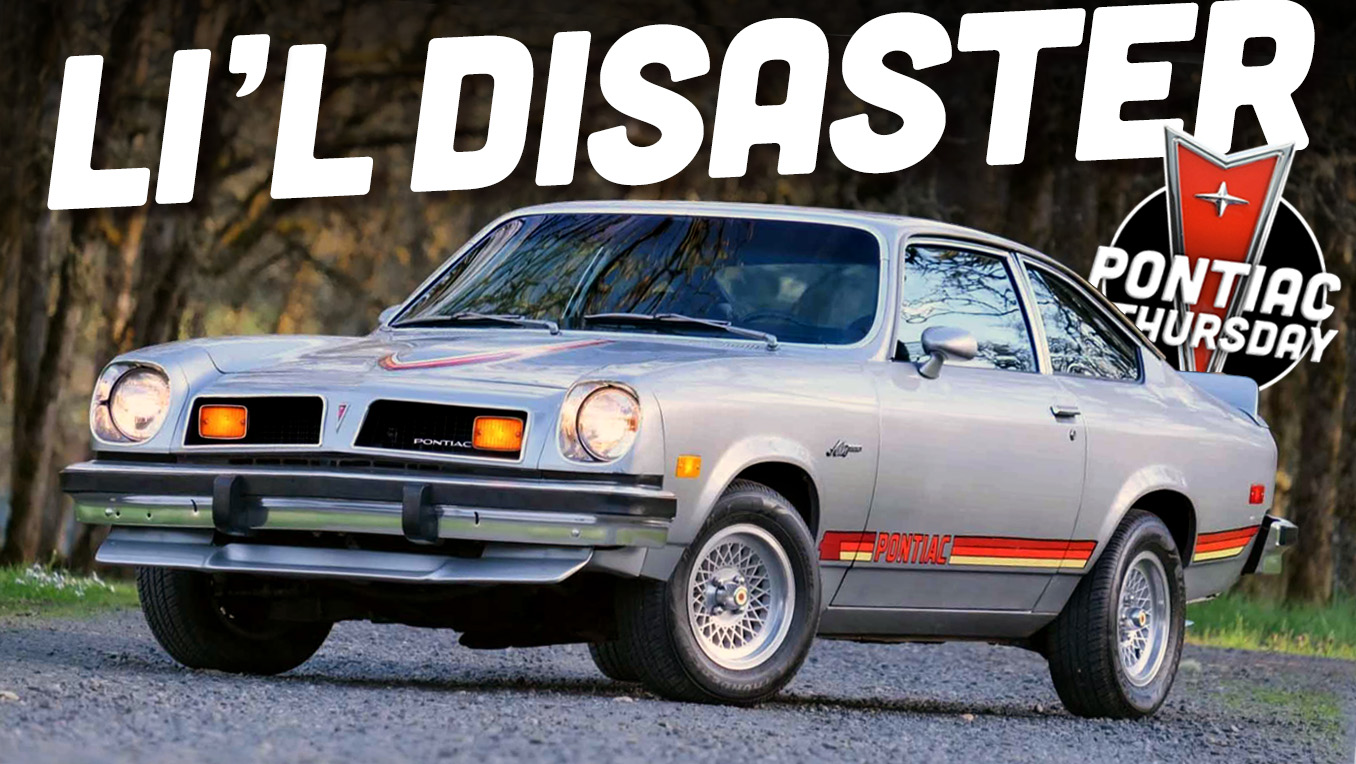







I had a church youth group leader that had a ’74 or so Vega Kammback wagon and it was a very good looking car. His was relatively new, so didn’t seem that bad. Better looking than my ’68 Datsun 510 wagon and because it had air conditioning. My Datsun probably outlived his.
IMHO, the Chevy looked better than the Pontiac with all its “Li’l” add-on doodads.
I was never a fan of Pontiac’s stylings. I preferred the Chevelles and Old Cutlass/442s of that era.
The Vega is a legendary failure but not Pontiac’s only small penalty boxes. They sold the Chevette as the T1000 and even sold the Aveo as the G3 towards the end.
I’m loving the Pontiac Pthursday run. Here are a few that I nominate for some upcoming articles.
6000 STE AWD
McLaren Grand Prix Turbo
Bonneville SSEi
1986 Grand Prix 2+2
Fiero
Lemans GT-37
A college mate bought a new Vega off the showroom floor that was already rusting through the paint!
They were all over the used market when looking for my 1st car. Any beyond 40k miles smoked widely from bad cylinders.
My best friend in high school had an orange, 2 door wagon. His dad was a genius and a mad man and dropped a v6 in it. Without and LSD it would wheel spin with little effort.
Oh man I want a wagon version of that I can swap a great twin cam engine of some kind into, maybe a Miata mill…
This speech pattern reminds me of someone.
Last year I came across an abandoned ’76 Astre Kammback on a customers property and removed it for him. VIN520152. Kind of a shame to see it sitting there with a foot- wide tree growing through the middle of it.
I have feelings of mixed nostalgia about the Vega. My dad had a Kammback wagon in that awesome blue color. I still think that it’s a good looking l’il shooting brake if you will. That said, it did rust within a year or two! Right in front of the windshield on the fender.. rusted right through and now I understand why!
My parents had a ’75 Kammback. Was stationed in Guam from ’77 to ’80 and by the time it made it to my dad’s next duty station in Connecticut, it was well rusted especially inside the rear side vents. Guam isn’t kind to bare (or thinly protected) sheet metal.
Terrible.
The Fairmont factory workers used to do drugs and consume illegal substances. I think its no suprise why Chevrolet quality was atrocious back then.
Wait a minute… blue-collar workers in the 70’s did drugs (AND consumed illegal substances)? This is a mind-blowing newsflash LOL.
> Wangers
Heh
I mean, when your competition is the Pinto…
“First, Delorean’s boss (Ed Cole) pushed for the Vega to employ an aluminum-block OHC four engine without cylinder liners, and honestly thought the block’s heat dissipation would allow it to run without a radiator. Seriously”
An engine cooled with air alone?
Preposterous!!!
My first car was an Astre. It was my father’s, had over 200k miles on it, and consumed/leaked lots of oil. If I didn’t take it he was going to sell it to the junk yard.
It truly was a piece of crap. The only thing it did well was stop as the brakes had recently been serviced.
My favorite Astre memory is seeing a new one at a dealer with a Vega steering wheel in it. It’s amazing that someone on the assembly line couldn’t say, “Stop!”
Q/C was MIA during the early ’70s.
‘Hey, it had a steering wheel, what more do you want?’
Worst I ever saw at the time, was a wrong colored bit of interior trim in a Plymouth.
Neighbor got a ’74 LTD Wagon with no oil in the rear axle, and my sister’s Vega would rust as you watched it.
Oddly, never had any of the motor issues that every other Vega seemed to suffer from.
I agree with the last part. I struggle to think of vehicles I care less about than McLarens post-F1 and cannot recall the last time I saw any kind of Vega.
I have a hard time believing that little wide track was slow. That’s a lot of “+5 to HP” stickers. I figure that thing is a Hooker Header and a K&N filter sticker from outrunning a Hellcat.
As bad as these cars are, I’d still love to have a wagon one to LS/T56 swap. I’d take a Vega too, but I like the Pontiac front end slightly more. About a decade ago there was a blue Vega wagon running around the city I was living in, and it was a fantastic sleeper. It hardly made any noise, and it had period-correct wheels. However, if you looked from behind you could notice it had been mini-tubbed, and if you looked inside you noticed a very discreet roll cage. At a Friday “BBQ & Cars” meet I also saw it had a built big block V8 squeezed into it with nitrous, and the exhaust setup consisted of four mufflers to keep it quiet, but electric cutouts for when it was time to get roudy. It seemed like a handful of good stuff shoved into a pile of junk, but I loved it anyway.
Somewhere near me there is or at least was a V8 Astre panel. I’m not sure if I saw it last summer, but I have typically seen it at least once each summer since I’ve lived here. It is a pro-street style build so I’m betting it has the old school SBC. No crazy graphics though just a simple metallic. I’d love to see it stopped some time so I could check it out. To me the Astre is just sooo much cooler than a Vega and of course far less common.
In ’71 a friend of a friend went to the local Chevy dealer in South Bend and bought a new Vega. He was an army mechanic who had just been brought back to the U.S. and knew his way around cars. He drove the Vega home, pulled out the brand new drivetrain, and sold it back to the dealer for 1/2 the cost of the car because they couldn’t get enough engines to supply the backlog of warranty failures they had amounting.
He then pulled a 327 out of a wrecked Corvette, rebuilt it, and had what may have been one of the first V8 converted Vegas. Allegedly, it was an absolute rocket, but he eventually twisted the rear suspension mounts out of the body and it was junked. He was more of a VW guy anyway and still races a Karmann Ghia drag car. He’s a bit, uh, “quirky” and enough old timers still bring up that Vega for me to believe it has to be partially true.
The fact the the (in)famous Iron Duke would actually improve this platform is hilarious.
Side note: would the Iron Duke go down as GM’s best worst engine or worst best engine ever? Because isn’t this the engine the etymological origin of the phrase “runs longer poorly than most engines will run.”?
Good question on the Iron Duke. By the time it got TBI and had the ‘Quad 4’ sticker on the cover they were reliable as ever and they are still kicking to this day by the tens of thousands.. In the Grumman LLV mail trucks. Some have a 2.2 4cyl but listen to them close, you can hear that Iron Duke still humming along. I’d say legend status.
The Quad 4 was a different engine – I think you mean the “Tech 4”?
I am a moron. Yep Tech4 is where I was going… I should know this because I had 2 of them in different general motors A body front wheel drive cars. Thanks sir!
I meant Tech4
Had a major flashback looking at these pics – not because I ever owned one (either chevy or pontiac), more about the peculiar fuel filler on them. I was a gas station attendant in my youth (the ’80s) and there were still a fair number of these running around – based on the problems, that was something of a miracle, but I digress. What I remember about these things is that the filler neck was low and canted slightly inward. This meant that whenever you filled one up, it was virtually impossible for the thing not to kick gas out before the pump handle clicked off. Even if you were standing near it and heard it *gulg-glug* (telltale sound before it is full), you couldn’t click the pump off fast enough to prevent kickback – you’d always wear it. More often than not, you’d just let it do its thing and spit gas on the pavement and side of the car. I know…environmentally uncool, but what did we know? Anyway, I never saw one of these things that didn’t have permanent stains on the quarters from that action.